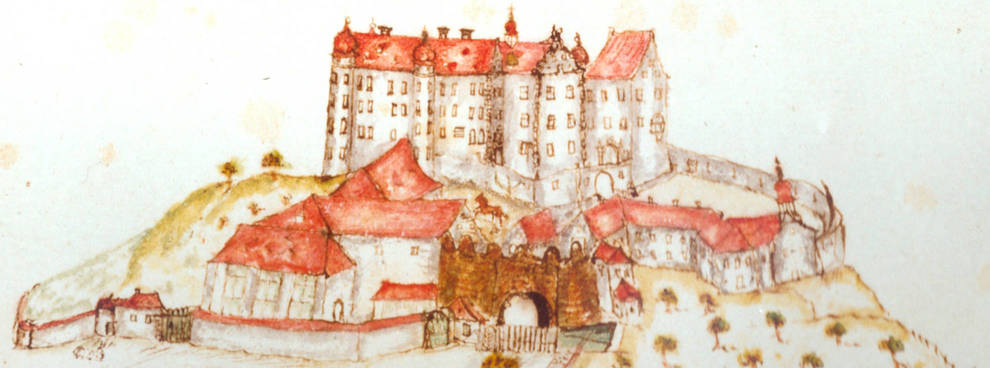
History
Once upon a time
Kapfenburg Castle is located in the Ostalbkreis district on a mountain nose of the Albtrauf, 130 m above the town of Lauchheim.
The name "Kapfenburg" is derived from the medieval term "kapfen" ("to gape", "to look into the country").
After the fall of the Hohenstaufen dynasty, the Counts of Oettingen and their liege lords, the Lords of Gromberg, took over much of the land around Kapfenburg Castle. In 1364, the Deutschordenshaus Mergentheim acquired the castle. It was the last commendation founded by the Order in southern Germany. The Order's state in Prussia and the Order houses in the Empire were already drifting apart. Thus Kapfenburg Castle bears witness above all to a small ecclesiastical-knightly residence of the late Middle Ages and early modern times.
In the Rhine Confederation Act of 1806, Napoleon abolished the Teutonic Order and awarded Kapfenburg Castle to King Frederick of Württemberg. It has been in the possession of the state ever since. Kapfenburg Castle was never destroyed. In accordance with the change in function from a fortified castle to a residential castle with administrative headquarters, it has been converted and extended into an idiosyncratic architectural ensemble that combines architectural styles from very different eras.
Since October 1999, the Kapfenburg Castle International Music School Academy Cultural Centre has been based within the walls of the former Teutonic Order fortress. As a result, Kapfenburg Castle has become a place of encounter and musical and creative activity for many people from Germany and abroad.
The history of the castle at a glance
| 12th century |
Kapfenburg Castle was built during the Staufer period to guard the road connections from west to east. |
| 1311 |
After the fall of the Staufer dynasty, Kapfenburg Castle falls to the Counts of Oettingen. |
| 1364 | Purchase of Kapfenburg Castle by the Teutonic Order. Troops for the crusades are organised from the castle. |
| 1432 | Foundation of the Kapfenburg brewery, various tenants until its closure in 1960. |
| 1525 | Peasants' War: unsuccessful storming. |
| 1534 | Construction of the bastion. |
| 1538 | The Hohenlohe Building is erected. |
| 1590-1627 | Construction of the Westernach Building under Commander Johann Eustach von Westernach. Development from a fortified building to a representative manor house. |
| 1618-48 | During the Thirty Years' War the castle is plundered but remains undestroyed. |
| 1714-19 | Extensive alterations and renovations which lead to the castle's present appearance. |
| 1806 | Foundation of the Rhine Confederation. Napeoleon awards Kapfenburg Castle to King Frederick of Württemberg. |
| 1811 | Establishment of a cameral office.. |
| 1809 | Abolition of the Teutonic Order in the Rhine Confederation states. |
| 1811-1973 | Partial use as a forestry office. |
| 1852 | Use of the Fürstensaal as a prayer hall for the Protestant diaspora community. |
| 1938 | Gauschule of the National Socialist Welfare (NSV). |
| 1945 | The US Army organises its troops from Kapfenburg Castle. The Lorenz Chapel becomes the church of the Lauchheim Protestants, displaced persons are accommodated. |
| 1961 | The restaurant is moved to the Hohenlohebau, the domain becomes a branch of the Schwäbisch Gmünd correctional facility. |
| 1989 | Establishment of a local history museum, partly used for exhibitions from 1990. |
| 1999 | The International Music School Academy Cultural Centre Schloss Kapfenburg begins its work. |